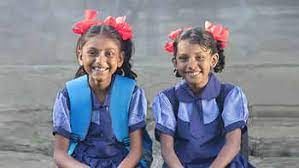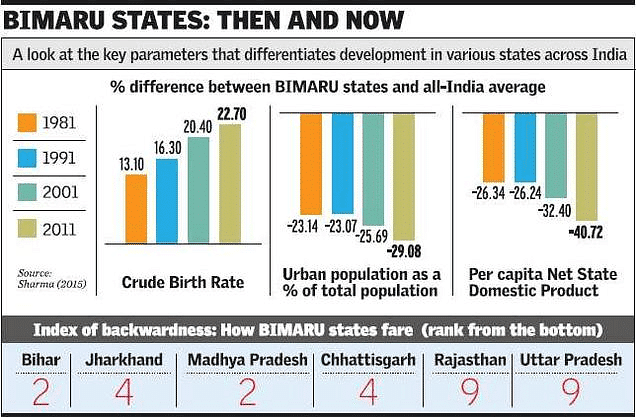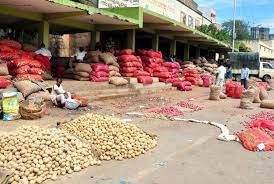UPSC Daily Current Affairs- 21st July 2023 | Current Affairs & Hindu Analysis: Daily, Weekly & Monthly PDF Download
GS-I
Kerch Bridge

Why in News?
The Kerch Bridge, linking the Russian mainland to the Crimean Peninsula, suffered an attack by Ukrainian sea drones, leading to retaliatory actions by Russia.
About Kerch Bridge
- The Kerch Bridge, across the Kerch Strait, is 19 km long and has two parallel rail and roadways.
- It was opened in 2018 by Russian President Vladimir Putin with great fanfare, four years after Russia annexed Crimea from Ukraine through a contested referendum.
- It is also a symbol of Russia’s control over Crimea, annexed in 2014.
- It holds symbolic importance for Russia, as it provides direct connectivity between the mainland and the annexed Crimea.
Significance of the Kerch Bridge for Russia
- Establishing Connectivity: Following the annexation of Crimea in 2014, the bridge was constructed to secure a “land bridge” between mainland Russia and Crimea.
- Logistical Supply Link: The bridge plays a critical role in facilitating logistical supplies to Russian troops in southern Ukraine.
- Strategic Vulnerability: The bridge remains within range of Ukrainian fire, making its security vital for Russia’s military operations.
Source: The Hindu
Unwanted Girl Child: Nakoshi

Why in News?
Priyanka Jagtap in her paper, ‘The Forgotten Nakoshis of Satara: A Renaming Programme Examined’ explores the cultural practice favouring sons over daughters.
About Nakoshis:
- In many regions in India, demeaning names or names that translate to ‘unwanted’ are given to girls.
- For instance, in certain districts of Maharashtra where girl children, especially from poorer economic backgrounds, are given the name Nakoshi, Nakusa or Nakusha (meaning ‘unwanted’ in Marathi).
Why is there a preference towards sons?
- Cultural notion: A significant share of people prefers sons due to notions that the family lineage is carried forward by men and that only sons will take care of their elderly parents.
Impact of such preferences:
- The low child sex ratio: In the last few decades, Satara has had a poor child-sex ratio, with only 895 girls per 1,000 boys, according to the 2011 Census, hinting towards illegal abortions.
- Demeaning names: A survey conducted in 2011 revealed that approximately 265 females had the name Nakoshi in the surveyed district, which was associated with the disappointment of having a daughter.
Child Sex Ratio in India
- The Child Sex Ratio (CSR) (number of girls for every 1000 boys between the age group of 0-6 years) in India with an all-time low of 918 in 2011, has declined from 976 in 1961.
- However, India’s sex ratio (females per 1,000 males) is expected to improve to 952 by 2036, up significantly from 943 in 2011, according to the Women and Men in India 2022 report.
Reasons behind the low sex ratio:
- Pre Natal-Sex Determination: According to a study in 2011, around 1.5 lac unborn girls are killed every year in UP alone. The rate of conviction of the culprits is very low – with only 206 doctors being convicted from 2003-2014
- Infant and Maternal Mortality: Due to female foeticide, and death of women during the childbirth due to improper care and less facilities.
- Lack of empowerment of women: There is a lack of empowerment of women especially in the rural areas, so they play little role in family planning decisions.
- Social status of women: People are worried about the dowry with the birth of a girl child. Due to financial problems, most of the families in rural areas prefer male children over females.
Steps by Government:
- Renaming ceremony organised by the Satara district administration which was aimed to raise awareness about the importance of girls and combat female foeticide as part of the “Save the Girl Child” campaign.
- Beti Bachao Beti Padhao (BBBP): Alarmed by the sharp decline in Child Sex Ratio, the Government of India has introduced the BBBP programme to address the issue of decline in CSR in 100 gender critical districts.
- Scheme for Adolescent Girls(Rajiv Gandhi Scheme for Empowerment of Adolescent Girls (SABLA): It aims to provide them with life skills education, nutrition and health education, and awareness of socio-legal issues, among other things.
Challenges:
- The lack of policy implementation, diversion of funds and the failure of monitoring mechanisms: According to the report, nearly 80 percent of the funds for the scheme BBBP has been used for its advertising and not on sectoral interventions such as in health and education for women.
- A tokenistic approach: Despite receiving name-change certificates, many of these girls continued to be called Nakoshi due to bureaucratic obstacles and complexities involved in officially changing their names.
What needs to be done?
- It is crucial to empower and boost the confidence of girls who face discrimination. This can be achieved through educational support, counselling, and financial assistance for education and healthcare.
- Additionally, steps to ban derogatory names for daughters must also be taken. The State must collaborate with NGOs to run campaigns against superstitions and cultural norms that promote sons over daughters.
Source: The Hindu
Rudragiri hillock
Why in News?
Recently, a fascinating fusion of rock art was spotted at Rudragiri hillock.
Key findings at Rudragiri Hillock:-
- A combination of prehistoric rock paintings from the Mesolithic period and exquisite artwork from the Kakatiya dynasty were spotted.
- Mesolithic period: This period is generally considered to have occurred between approximately 12,000-10,000 years ago
- During this time human societies were predominantly hunter-gatherer communities.
- The first cave presents a narrative mural portraying the intense battle between the Vanara brothers, Vali and Sugriva.
- Both figures stand on the battlefield wielding maces, their faces displaying fierce determination.
- Rama, positioned behind Sugriva, shoots arrows at Vali.
- A Ramayana fresco depicting Hanuman lifting the Sanjeevani hill with his right hand painted a conch and fire altars can be seen to his right and another prehistoric painting to the left.
- In the middle cave, a grand sketch of Hanuman, accompanied by sacred symbols of the conch (Sankha) and the fire altar (Yagna Vedi), are seen.
- The third cave houses the prehistoric rock paintings from the Mesolithic era.
- Interestingly, the Kakatiya artist chose the same rock shelter to superimpose the elegant figure of Hanuman, who is portrayed in a unique ‘Anjali’ posture, folding his hands in a divine offering.
- Ganapati Deva Maharaja (1199-1262 AD) who was the built the Muppavaram temple and a prominent figure of the Kakatiya dynasty is likely to be the patron of the rich ancient mural heritage found at Rudragiri.
About Rudragiri hillock:-
- Location: Guntur district of Andhra Pradesh.
- It is nestled amidst the Eastern Ghats and features five naturally formed rock shelters at its foothills, facing westward.
- These shelters served as living quarters for people during the Mesolithic age around 5000 B.C.
- They bear witness to the luminous rock paintings of that era.
- Two natural caves at the southern end of the hillock also exhibit exceptional murals from the renowned Kakatiya kingdom.
- Kakatiya kingdom: It was a south Indian dynasty that ruled most of the eastern Deccan region comprising present-day Telangana and Andhra Pradesh, and parts of eastern Karnataka and southern Odisha.
- Time Period: between 12th and 14th centuries.
- Capital: Orugallu
Source: The Hindu
GS-II
Black Sea Grain initiative

Why in News?
Recently, India has voiced support for the UN’s efforts in continuing the Black Sea Grain initiative.
Background:-
- India’s reaction came after Russia announced it was terminating the implementation of the UN-brokered deal that allowed the export of grain and related foodstuffs and fertilizers from Ukrainian ports.
About the Black Sea Grain initiative:-
- Signed in 2022.
- Signed at Istanbul.
- The deal, brokered by the United Nations (UN) and Turkey.
- Objective: to limit food price inflation emanating from supply chain disruptions because of Russian actions in the world’s ‘breadbasket’ by ensuring an adequate supply of grains.
- Time Period: Initially it was stipulated for a period of 120 days.
- It was to provide a safe maritime humanitarian corridor for the Ukrainian export of food grains.
Need for the deal:-
- Ukraine is one of the world’s largest grain exporters.
- However, since Russia invaded Ukraine, exports of grain, food and fertilizers from both countries have been significantly hit.
- The disruption in supplies resulted in rising prices.
- This added to the burden of an already existing food crisis in some countries.
- In a bid to address this crisis and ensure the smooth movement of supplies amidst the ongoing war, the United Nations and Turkey brokered the Black Sea Grain Initiative on 22 July 2022.
- The central idea was to calm markets by ensuring an adequate supply of grains, thereby limiting food price inflation.
About the Black Sea:-
- Location: between Eastern Europe and Western Asia in the Atlantic Ocean.
- Major rivers: Danube, Dnieper, and Don.
- Bordering countries: Bulgaria, Georgia, Romania, Russia, Turkey, and Ukraine.
Important water bodies around the Black Sea:-
- The Black Sea ultimately drains into the Mediterranean Sea via the Turkish Straits and the Aegean Sea.
- Bosporus Strait: connects the Black Sea to the Sea of Marmara.
- Strait of the Dardanelles: connects the Sea of Marmara to the Aegean Sea.
- Kerch Strait: connects the Black Sea to the Sea of Azov.
Source: AIR
BIMARU’ Tag: What does this term mean?

Why in News?
Uttar Pradesh Chief Minister said the State has risen from its BIMARU tag and is now contributing positively to the process of India’s development.
About BIMARU states:
- The ‘BIMARU’ acronym has been used to refer to Bihar, Madhya Pradesh, Rajasthan, and Uttar Pradesh, to imply they have lagged in terms of economic growth, healthcare, and education.
- BIMARU means “sickly” in Hindi. The term was used to highlight the backwardness, especially with regard to poor performance in demographic indicators and contribution to population explosion.
- These states had exceptionally high levels of mortality, morbidity, illiteracy, fertility, undernutrition, and social inequality and lagged behind in per capita income.
- It was coined by Ashish Bose in 1980 to pinpoint India’s demographic malady.
- Bose mainly argued that from a family planning and population control perspective, these four states, with their high population growth rates were likely to offset the gains made elsewhere in the country.
BIMARU States and Population Growth:
- Population Growth: A report by the Union Ministry of Health & Family Welfare revealed that BIMARU States (excluding the three newly carved out States) will contribute to 49.1% of the population increase in India between 2011 and 2036.
- Implication: Population in Indian States also dictates the delimitation process or the number of seats allotted to them in Parliament.
- Currently, the seats are proportional to the Indian population as of the 1971 census. It was frozen until 2001 (and has now further been extended to 2026) to give States time to meet family planning goals.
- The Problem: The Southern States of India have repeatedly stressed that the division of seats and devolution of funds to States based on population are unfair to them, as they have better performed in family planning.
Reasons behind backwardness of BIMARU states:
- Low per capita income: These have traditionally had low per capita income levels compared to other states in India, with Bihar having the lowest per capita income among Indian states.
- High poverty rates: They have a high percentage of people living in poverty, with Bihar and Uttar Pradesh having some of the highest poverty rates in the country.
- Low literacy rates: They have lower literacy rates than the national average, with Bihar having the lowest literacy rate among Indian states.
- Poor healthcare indicators: They have traditionally had poor healthcare indicators, with high infant and maternal mortality rates.
- Agriculture-based economy: These states are primarily agricultural states, with a significant percentage of the population engaged in agriculture and related activities.
- Significant population: They are among the most populous states in India, with Uttar Pradesh being the most populous state in the country.
Overall, the BIMARU states have traditionally lagged behind other states in India in terms of economic and social development, although in recent years, there has been progress in improving development indicators.
Positive developments:
- In recent years, some of these states, such as Rajasthan and Madhya Pradesh, have shown significant improvement.
- In terms of economic growth, several of these states have experienced high growth rates in recent years, with Madhya Pradesh and Bihar recording growth rates of over 10% in 2019-20.
- Uttar Pradesh and Rajasthan have also recorded growth rates of over 7% in recent years.
- There has also been progress in improving social indicators such as literacy rates and healthcare infrastructure.
- For example, Bihar has seen a significant increase in literacy rates, with the state’s literacy rate increasing from 47% in 2001 to 63% in 2011.
- Madhya Pradesh (MP): Madhya Pradesh ranks first in distributing Ayushman cards and other States are now adapting MP’s Janbhagidari model.
- MP was the first to start a Public Service Guarantee Act (Lok Sewa Guarantee) to ensure that citizens get the benefit of better facilities.
- Uttar Pradesh (UP): UP has revised its position in view of GSDP (Gross State Domestic Product) estimates that indicate UP is now the third largest economy after Maharashtra and Tamil Nadu.
- Rajasthan: The Rajasthan Government recently signed 4192 Memoranda of Understanding involving investment commitment worth Rs 10.44 lakh crore ahead of the Investment Rajasthan Summit 2022.
- Bihar: Improvement in road connectivity, better maintenance of law and order and efforts to raise the literacy levels have boosted the Bihar’s economy.
Suggestive measures: way forward
- Human Resource Development: The two states share poor literacy levels and health status of its residents. Governments at center and state must work in close cooperation with local governments and administration to implement schemes in spheres of education, health and skill development.
- Tourism: Bihar has a lot of potential for spiritual tourism whereas UP can be developed as a site of eco-tourism.
- Tourism brings in employment for the local people and additionally forex for nation.
- Investment: As has the case been in Gujarat, Tripura, and Andhra Pradesh, investment summits on similar lines to encourage private investment in these areas can help generate income, employment and infrastructure.
- Infrastructure: Public investment is much needed for infrastructural development.
- There is a lot of untapped potential for roadways, railways and inland waterways. NW-1 on Ganga River has not been used to the optimum.
Overall, while the BIMARU states have made progress in recent years, there is still a long way to go in terms of achieving more equitable development across the country.
Source: Indian Express
GS-III
NITI Aayog suggests changes to APMC System

Why in News?
Experts from NITI Aayog have put forth recommendations to revamp the existing Agriculture Produce Marketing Committee (APMC) system in India’s agriculture sector.
What is APMC?
- APMCs are created by state governments, reflecting agriculture’s status as a State List subject under the Indian Constitution.
- APMC’s existence aims to safeguard farmers from exploitation by large retailers and maintain reasonable retail price spreads.
- All food produce must first be brought to market yards and then sold through auction as per the Agricultural Produce Marketing Regulation (APMR) Act.
Establishments of APMCs
- British Raj Influence: The regulation of raw cotton under the Hyderabad Residency Order in 1886 marked the beginning of agriculture produce market regulation in India.
- Royal Commission’s Recommendation: The 1928 Royal Commission on Agriculture recommended the regulation of marketing practices and the establishment of regulated markets.
- Model Bill and Independence: The Government of India prepared a Model Bill in 1938, but significant progress was made only after India gained independence.
- Enactment of APMR Acts: During the 1960s and 1970s, most states enacted and enforced Agricultural Produce Markets Regulation (APMR) Acts, bringing primary wholesale assembling markets under their ambit.
Working of APMCs
- APMCs operate on two principles:
- Ensure that farmers are not exploited by intermediaries (or money lenders) who compel farmers to sell their produce at the farm gate for an extremely low price.
- All food produce should first be brought to a market yard and then sold through auction.
- Each state that operates APMC markets (mandis) establish their markets in different places within their borders, geographically dividing the state.
- Farmers are required to sell their produce via auction at the mandi in their region.
- Traders require a license to operate within a mandi.
Key Reforms Suggested by NITI Aayog
(1) Alternative Marketing Options
- App-Based Sales and E-commerce: The experts suggest leveraging technology for app-based sales of farm produce by individual farmers or farmer groups. Additionally, they emphasize the potential of e-commerce and digital commerce as alternative marketing avenues.
- Subsidy Reforms: To address the over-exploitation of groundwater due to free or highly subsidized power, they recommend direct payment of subsidy amounts to farmers and shifting to the metered power supply.
(2) Modernizing Agriculture
- Corporate Investments: The paper highlights that about 80% of investments in agriculture come from private sources, mainly farmers. However, the corporate sector’s involvement remains low, and they believe there is significant potential for corporate expansion in agribusiness.
- Market Integration and Competition: Encouraging corporate investment in areas like warehousing, logistics, cold chain, food processing, and value chain development would improve market integration and competition over time and space.
(3) Enhancing Farmer Income
- High-Value Crops and Livestock Activities: To boost the income of farmers with small land holdings, the experts suggest enabling them to focus on high-value crops and livestock activities while supplementing their agricultural income with non-agricultural sources.
- MSP Reforms: The Minimum Support Price (MSP) system should be designed to avoid market distortions. The paper proposes using a combination of procurement and price deficiency payment to pay MSP to farmers, linked to public distribution system needs, price stability, and strategic stocks.
Earlier reforms: Three Farm Laws
Reforms were passed in the form of three acts in 2020 (later repealed) which led to massive protests.
- Farmers’ Produce Trade and Commerce Act: This act aimed to promote and facilitate trade and commerce of farmers’ produce outside the physical boundaries of APMCs, allowing farmers to sell their produce in other markets and directly to buyers.
- Farmers Agreement on Price Assurance and Farm Services Act: This act empowered farmers to enter into agreements with buyers, ensuring a guaranteed price for their produce and access to various farm services.
- Essential Commodities Amendment Act: This amendment sought to remove restrictions on the movement and storage of essential commodities, promoting a more open market.
Conclusion
- Balancing Farmer Interests and Market Efficiency: While the reforms aim to create a more competitive and liberalized market, it is crucial to address farmers’ concerns and protect their interests.
- Dialogue and Collaboration: To find common ground, constructive dialogue and collaboration between the government and farmers are essential in shaping the future of agricultural reforms.
Source: Indian Express
Rajasthan Minimum Income Bill

Why in News?
Rajasthan tabled the Rajasthan Minimum Guaranteed Income Bill, 2023.
About the Bill
- The Bill has three broad categories: Right to minimum guaranteed income, right to guaranteed employment, and right to guaranteed social security pension.
- Minimum guaranteed income: Each adult citizen of the state has been guaranteed a minimum income for 125 days a year through the Rajasthan government’s flagship Indira Gandhi Shahri Rozgar Guarantee Yojana for urban areas, and through Mahatma Gandhi National Rural Employment Guarantee Act (MGNREGA) in rural areas.
- Guaranteed employment: The right to employment states that post the work in urban or rural employment schemes, the minimum wages should be paid “weekly or in any case not later than a fortnight.”
- Guaranteed social security pension: Every person falling in the category of old age/specially abled/widow/single woman with prescribed eligibility shall be entitled to a pension.
- It will increase over the base rate in two installments — 5 percent in July and 10 percent in January of each financial year starting 2024-2025.
- Implementation: The state will designate a program officer — not below the rank of Block Development Officer in rural areas and an Executive Officer of the local body in urban areas — to implement the Act.
- The Program Officer shall ensure that the work site is within a radius of five kilometres of where the job card is registered in both rural and urban areas.
- If the Program Officer fails to provide employment within 15 days from the receipt of the application, the applicant shall be entitled to an unemployment allowance on a weekly basis.
Significance
- The law combines employment guarantees for those who can work [both in rural and urban areas] and minimum social security pensions for those who can’t — thereby ensuring a minimum legal income guarantee for all.
- Several other States too have in recent years introduced employment guarantee schemes for the urban areas but only via executive order. This is the first time the Urban Employment Guarantee Scheme will get legislative backing.
- This is also the first time that social security pensions will become a legal guarantee and a breakthrough in the demand for indexing entitlements for the economically vulnerable.
Challenges
- Financial Burden on the state: The scheme will have an additional expenditure of Rs 2,500 crore per year for this scheme, which may increase with time which might create an additional burden on the state.
- Targeted Implementation of the scheme: The implementation of the scheme in a manner that the targeted group gets benefitted is challenging.
Way Ahead
- According to the basic spirit of the Constitution, every person has the right to live with dignity and the scheme has a good intent for providing minimum income guarantee for crores of vulnerable families across the state.
Source: IE
Monsoon session of Parliament to decide fate of Biological Diversity (Amendment) Bill

Why in News?
The Biological Diversity (Amendment) Bill, 2022 is set to be tabled during the monsoon session of the Parliament. Earlier, it was to be discussed in the Lok Sabha on March 29, 2023 but was deferred.
Central idea
- The Biological Diversity (Amendment) Bill, 2022, introduced in 2021 seeks to amend the existing Biological Diversity Act, 2002. However, it has faced criticism and reservations due to concerns that certain amendments may favor industry interests and not adequately uphold the principles of the Convention on Biological Diversity (CBD). The bill’s journey so far has raised questions about its potential impact on biodiversity conservation in India.
Objectives of the Bill
- The main objectives of the amendment bill are to ease regulations on wild medicinal plants,
- Promote the Indian system of medicine
- Foster an environment for collaborative research and investments
- Reduce the burden of obtaining permissions from the National Biodiversity Authority (NBA) for practitioners and companies producing medicinal products
Controversial Provisions of the Biological Diversity (Amendment) Bill, 2022
- The bill proposes to de-criminalize violations of biodiversity laws and withdraws the power given to the National Biodiversity Authority (NBA) to file a First Information Report (FIR) against defaulting parties.
- The bill allows domestic companies to use biodiversity without seeking approval from biodiversity boards. Only foreign controlled companies are required to acquire permission.
- The bill includes the term codified traditional knowledge, which grants exemptions to users, including practitioners of Indian systems of medicine, from the provisions of approvals for accessing or sharing benefits.
Concerns raised by the activists
- Some critics argue that the proposed amendments may weaken biodiversity conservation efforts in India
- Lack of oversight and accountability may lead to unchecked utilization of biodiversity resources, which could negatively impact ecosystems and biodiversity.
- The codified traditional knowledge may enable profit-seeking domestic companies to exploit traditional knowledge without adequately compensating the communities that have conserved and developed it for generations.
- The Convention on Biological Diversity (CBD) emphasizes the fair and equitable sharing of benefits arising from the utilization of biodiversity. The proposed amendments may not fully align with these principles.
- While the bill aims to promote traditional medicine and ease regulations, it may not sufficiently address the broader issues of biodiversity loss, habitat degradation, and the need for stronger conservation measures.
- Weakening biodiversity protection and benefit-sharing mechanisms could disproportionately affect indigenous and local communities, which often rely on biodiversity for their livelihoods and cultural practices.
Way forward
- Reassess and redraft the contentious provisions in the bill, particularly those related to decriminalizing violations, exempting domestic companies from seeking permission, and codified traditional knowledge.
- Establish robust and transparent mechanisms for equitable benefit sharing from the use of biodiversity.
- Adequately compensate indigenous communities and traditional knowledge holders for their role in conserving and preserving biodiversity.
- Incentivize businesses that prioritize conservation and sustainable utilization of resources.
- Strengthen enforcement measures to ensure compliance with biodiversity conservation regulations. Establish appropriate penalties for violations to deter non-compliance.
- Align the bill with India’s international commitments, especially those agreed upon during the 15th Conference of Parties to the CBD.
- Strengthen the capacity and authority of biodiversity governance bodies like the National Biodiversity Authority (NBA) to effectively regulate and monitor biodiversity-related activities.
Conclusion
- The Biological Diversity (Amendment) Bill, 2022 presents a complex dilemma for biodiversity conservation in India. As the bill awaits discussion in the monsoon session, it becomes crucial for policymakers to address the concerns raised by activists and legal experts, ensuring that India’s biodiversity is safeguarded and aligned with global conservation goals.
Source: The Hindu
|
44 videos|5359 docs|1133 tests
|






















